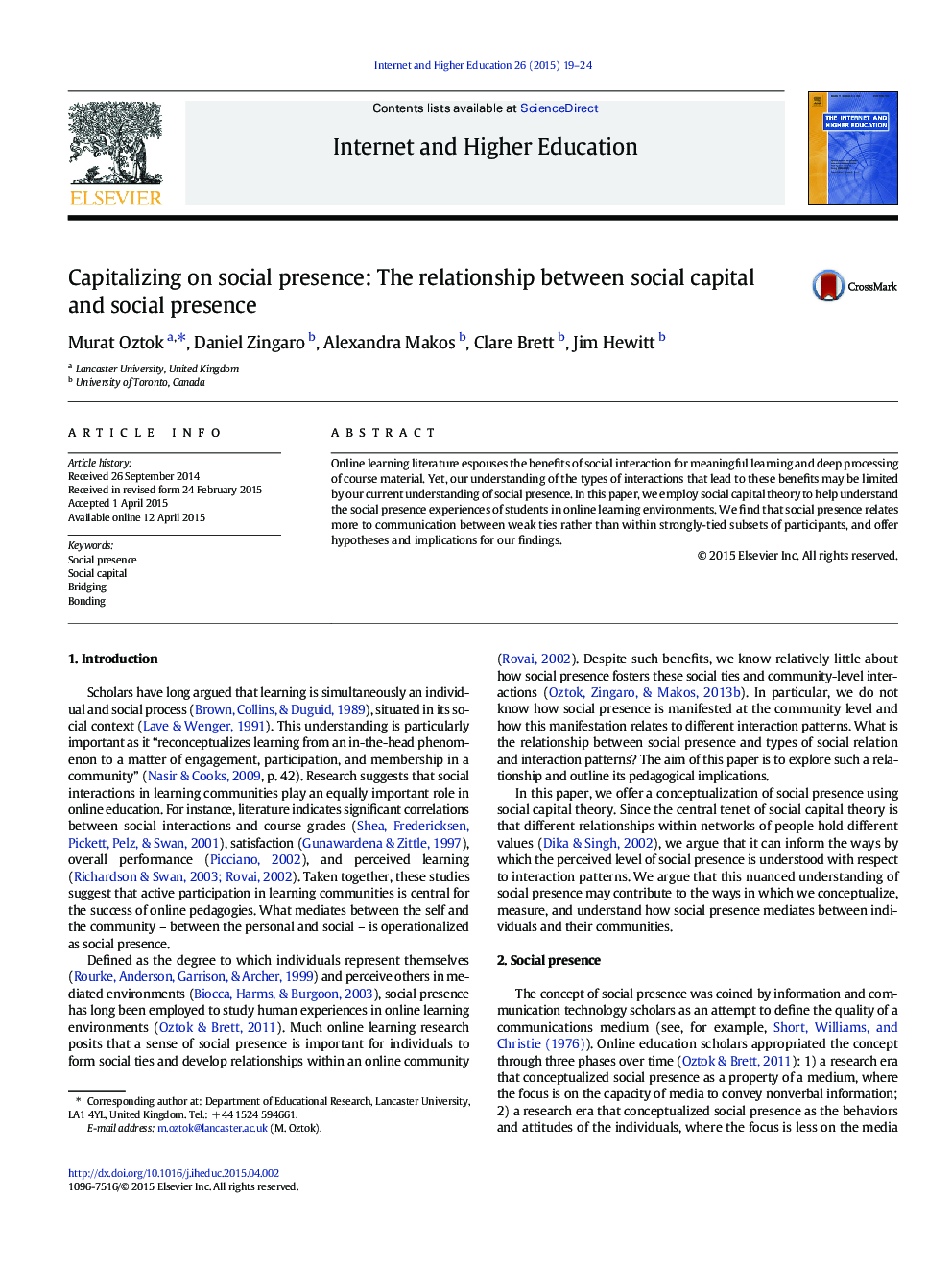| Article ID | Journal | Published Year | Pages | File Type |
|---|---|---|---|---|
| 357691 | The Internet and Higher Education | 2015 | 6 Pages |
Abstract
Online learning literature espouses the benefits of social interaction for meaningful learning and deep processing of course material. Yet, our understanding of the types of interactions that lead to these benefits may be limited by our current understanding of social presence. In this paper, we employ social capital theory to help understand the social presence experiences of students in online learning environments. We find that social presence relates more to communication between weak ties rather than within strongly-tied subsets of participants, and offer hypotheses and implications for our findings.
Related Topics
Social Sciences and Humanities
Social Sciences
Education
Authors
Murat Oztok, Daniel Zingaro, Alexandra Makos, Clare Brett, Jim Hewitt,
